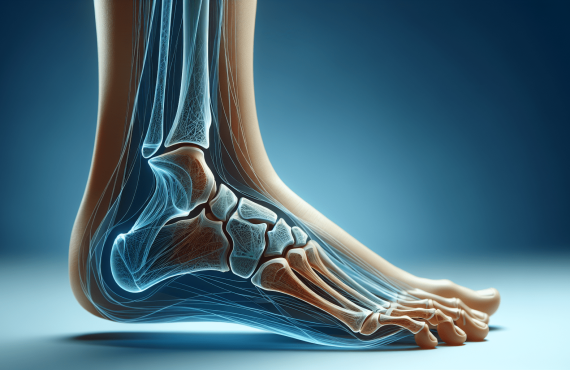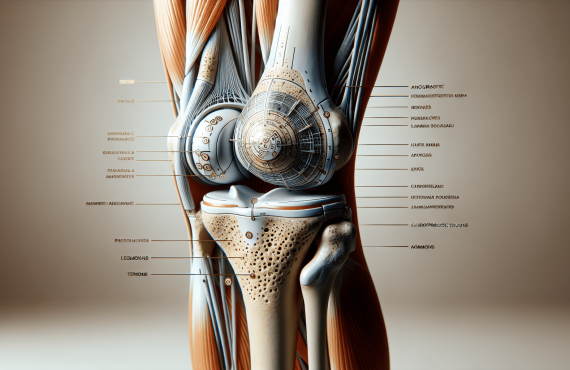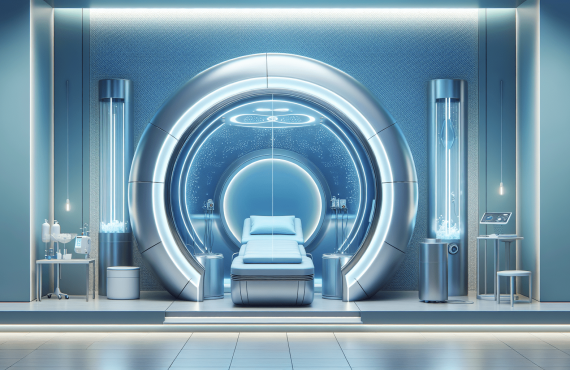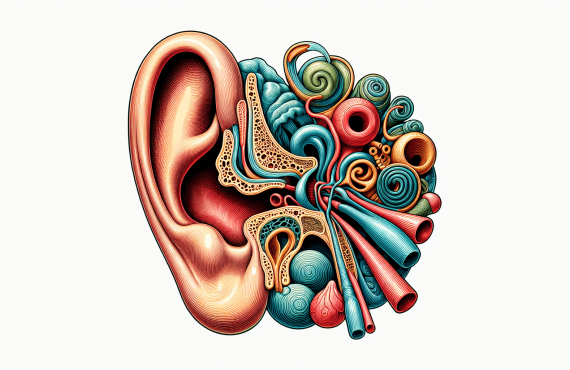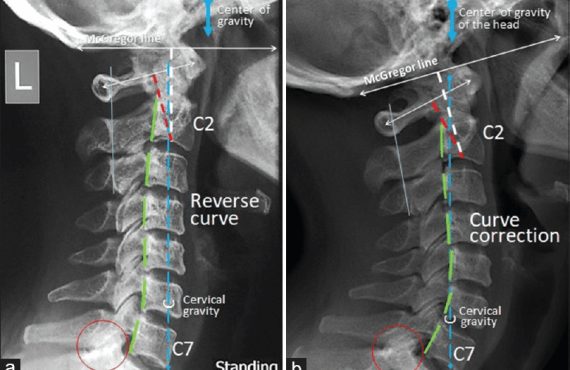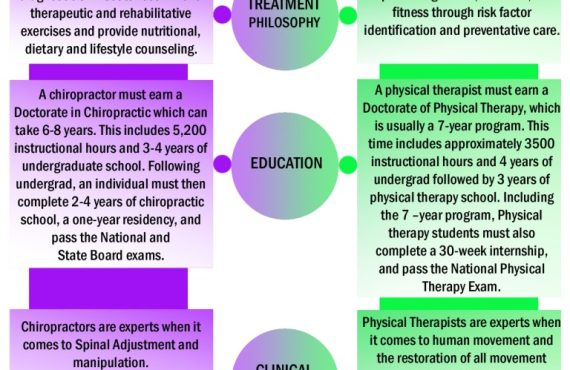If you’ve ever had concerns or questions about chiropractic care, you’re not alone. In this article, we will address common concerns people have and provide you with a better understanding of what chiropractic care entails. Whether you’re experiencing back or neck pain, or simply want to improve your overall well-being, Dr. Craig Henry and Dr. Aaron Hixon at Henry Chiropractic in Pensacola, Florida are here to help. With their expertise and dedication to helping others, they are well-equipped to alleviate any concerns you may have about chiropractic care. Let’s dive into the common concerns and provide you with the answers you need.
Table of Contents
Understanding Chiropractic Care
Chiropractic care is a form of healthcare that focuses on the diagnosis, treatment, and prevention of musculoskeletal disorders, particularly those related to the spine. Chiropractors utilize a hands-on approach to manipulate the spine and other joints in order to relieve pain, improve function, and promote overall wellbeing.
What is chiropractic care?
Chiropractic care is a non-invasive, drug-free treatment option that aims to address the underlying cause of musculoskeletal conditions like back pain, neck pain, headaches, and joint problems. Chiropractors use a variety of techniques, such as spinal adjustments, mobilizations, and soft tissue therapies, to restore proper alignment and function of the body’s structures.
How does chiropractic care work?
Chiropractic care works by restoring proper alignment and function to the spine and other joints, which in turn promotes the body’s natural ability to heal itself. When the spine is misaligned, it can interfere with the nervous system’s communication between the brain and the body, leading to pain, dysfunction, and a decreased ability to heal.
Through manual adjustments and other techniques, chiropractors are able to correct these misalignments, allowing the body to function optimally. By restoring proper alignment and function, chiropractic care can alleviate pain, improve range of motion, enhance athletic performance, and promote overall wellness.
What conditions can chiropractic care help with?
Chiropractic care can help with a wide range of conditions, including but not limited to the following:
- Back pain
- Neck pain
- Headaches
- Sciatica
- Whiplash injuries
- Joint pain
- Sports injuries
- Arthritis
- Muscle strains and sprains
Chiropractors are trained to assess and treat various musculoskeletal conditions, as well as offer lifestyle advice and rehabilitation exercises to help patients manage their symptoms and prevent future recurrences.
Safety of Chiropractic Care
Are chiropractic adjustments safe?
Yes, chiropractic adjustments are generally considered safe when performed by a licensed and qualified chiropractor. Chiropractors undergo extensive education and training to ensure that they can safely perform adjustments and other manual therapies.
It is important to note that like any medical procedure, there are some inherent risks associated with chiropractic adjustments. However, serious complications are rare and often avoidable when performed by a skilled and experienced chiropractor.
Are there any risks or side effects associated with chiropractic care?
While the risks and side effects of chiropractic care are typically minimal, some patients may experience temporary soreness, stiffness, or mild discomfort following an adjustment. These effects are usually short-lived and subside within a day or two.
Rarely, certain conditions may contraindicate chiropractic care or require modifications to the treatment approach. It is important to discuss your medical history and any concerns with your chiropractor to ensure that chiropractic care is safe and appropriate for you.
What precautions should be taken during chiropractic treatments?
Chiropractors are trained to perform adjustments and other therapies with the utmost care and precision. However, there are some precautions that both the chiropractor and the patient should take:
-
Communication: Open and honest communication is key to ensuring the safety and effectiveness of chiropractic care. Patients should inform their chiropractor about any pre-existing conditions, injuries, or concerns they may have. Likewise, chiropractors should thoroughly assess the patient’s medical history and perform any necessary examinations before proceeding with treatment.
-
Gentle techniques: Chiropractors often utilize gentle and specific techniques, especially when treating patients with certain conditions or injuries. By using appropriate force and pressure, chiropractors can minimize the risk of adverse effects and maximize the benefits of treatment.
-
Post-treatment care: Following a chiropractic adjustment, patients may be advised to rest, apply ice or heat packs, perform specific exercises or stretches, or make certain lifestyle modifications. It is important to follow these instructions to optimize the healing process and prevent any unnecessary strain or re-injury.
By taking these precautions, chiropractors and patients can work together to ensure a safe and effective chiropractic treatment experience.

Effectiveness of Chiropractic Care
Does chiropractic care really work?
Many patients have reported significant improvements in their symptoms and overall wellbeing after receiving chiropractic care. However, the effectiveness of chiropractic care may vary depending on the individual and the specific condition being treated.
Chiropractic care is widely recognized as a conservative and evidence-based treatment option for various musculoskeletal conditions. It aims to address the underlying cause of the problem rather than simply masking the symptoms. By restoring proper alignment and function to the spine and other joints, chiropractic care promotes the body’s ability to heal itself, leading to long-term improvements in pain, mobility, and overall health.
What does the research say about chiropractic care?
There is a growing body of scientific research that supports the effectiveness of chiropractic care for certain conditions. Numerous studies have shown positive outcomes for patients with back pain, neck pain, headaches, and other musculoskeletal issues when treated with chiropractic care.
For example, a systematic review published in the Journal of Manipulative and Physiological Therapeutics found strong evidence that spinal manipulation is effective in reducing chronic low back pain. Another study published in the Annals of Internal Medicine reported that spinal manipulation is as effective as medication for the treatment of acute lower back pain.
While more research is needed to fully understand the mechanisms and benefits of chiropractic care, the existing evidence suggests that it can be a valuable and effective treatment option for many individuals.
Are there any scientific studies supporting the effectiveness of chiropractic care?
Yes, there are numerous scientific studies that support the effectiveness of chiropractic care for various conditions. Some notable studies include:
-
A study published in the Journal of Manipulative and Physiological Therapeutics found that chiropractic care combined with exercise therapy is more effective in reducing pain and disability in patients with chronic neck pain compared to exercise therapy alone.
-
A randomized controlled trial published in the Journal of the American Medical Association showed that chiropractic care combined with standard medical care is more effective than standard medical care alone for reducing pain and improving function in patients with acute low back pain.
-
A systematic review published in the European Spine Journal concluded that spinal manipulation is an effective treatment option for acute and chronic neck pain.
These studies, along with others, provide empirical evidence that supports the use of chiropractic care for a wide range of musculoskeletal conditions.
Cost of Chiropractic Care
Is chiropractic care expensive?
The cost of chiropractic care can vary depending on several factors, including the location, the chiropractor’s experience and expertise, the specific treatment required, and whether or not insurance coverage is available. In general, chiropractic care is considered to be an affordable and cost-effective treatment option for many individuals.
It is important to note that while the initial cost of chiropractic care may vary, the long-term benefits can outweigh the expense. By addressing the underlying cause of musculoskeletal conditions, chiropractic care can help reduce the reliance on other costly interventions, such as medications, injections, or surgery.
Does insurance cover chiropractic treatments?
Many insurance plans provide coverage for chiropractic care, although the extent and limitations of coverage may vary. Some plans may require a referral from a primary care physician or prior authorization for specific treatments or procedures.
It is advisable to contact your insurance provider directly to determine the details of your coverage for chiropractic care. Additionally, many chiropractic clinics offer flexible payment options, such as payment plans or discounted package deals, to make chiropractic care more accessible and affordable for those without insurance coverage.
Are there any affordable options for chiropractic care?
In addition to insurance coverage, there are several affordable options for chiropractic care. Some chiropractic clinics offer discounted rates for cash-paying patients or those without insurance. Others may participate in community programs or charitable initiatives to provide reduced-cost or free chiropractic care to individuals in need.
Furthermore, some employers offer chiropractic care as part of their employee benefits package, allowing employees to access chiropractic services at reduced or no cost. It is worth exploring these options and discussing them with your chiropractor to determine the most affordable and suitable treatment plan for your needs.

Choosing the Right Chiropractor
What qualifications should a chiropractor have?
Chiropractors undergo extensive education and training to become licensed healthcare professionals. In the United States, chiropractors must graduate from an accredited chiropractic college and pass a national board examination to obtain their license.
When choosing a chiropractor, it is important to ensure that they are licensed and in good standing with the appropriate regulatory authority. You may also want to consider their years of experience, areas of expertise, and any additional certifications or specialized training they have completed.
How do you find a reputable and experienced chiropractor?
There are several ways to find a reputable and experienced chiropractor:
-
Referrals: Ask your primary care physician, friends, family members, or co-workers for recommendations. Personal referrals can be a valuable resource as they often come from individuals who have had positive experiences with a particular chiropractor.
-
Online directories: Utilize online directories or search engines to find chiropractors in your area. Many chiropractic clinics have websites that provide information about their services, treatment approaches, and the qualifications of their chiropractors.
-
Reviews and testimonials: Read reviews and testimonials from previous patients to get an idea of their experiences and satisfaction with a specific chiropractor. While individual experiences may vary, positive reviews can be indicative of a chiropractor’s expertise and professionalism.
What questions should you ask when choosing a chiropractor?
When choosing a chiropractor, it can be helpful to ask the following questions:
- What techniques or treatment modalities do you use?
- How many years of experience do you have?
- Have you treated patients with conditions similar to mine?
- What are your fees and payment options?
- Do you accept insurance?
- Can you provide references or testimonials from previous patients?
- Will I require x-rays or other diagnostic tests before treatment?
- What can I expect during a typical treatment session?
- How many sessions will I need?
- Do you offer personalized treatment plans or individualized care?
By asking these questions, you can gather the necessary information to make an informed decision and choose a chiropractor who meets your specific needs and preferences.
Integration of Chiropractic Care with Traditional Medicine
Can chiropractic care be used alongside other medical treatments?
Yes, chiropractic care can be used alongside other medical treatments. In fact, many patients find that combining chiropractic care with traditional medical interventions, such as medication or physical therapy, can lead to enhanced outcomes and improved overall health.
Chiropractors often work collaboratively with other healthcare professionals, such as primary care physicians, orthopedic specialists, and physical therapists, to provide comprehensive and integrated care for their patients. By working as part of a multidisciplinary team, chiropractors can contribute their expertise in musculoskeletal health and function to optimize patient outcomes.
Do chiropractors work with other healthcare professionals?
Yes, chiropractors often work with other healthcare professionals to provide holistic and patient-centered care. By collaborating with primary care physicians, orthopedic specialists, physical therapists, and other providers, chiropractors can ensure a coordinated approach to patient care.
In some cases, healthcare professionals may refer their patients to chiropractors when they believe that chiropractic care would be beneficial in addressing musculoskeletal conditions or promoting overall wellness. Likewise, chiropractors may refer their patients to other healthcare professionals when additional interventions or expertise are required.
What are the benefits of a multidisciplinary approach to healthcare?
A multidisciplinary approach to healthcare offers several benefits, including:
-
Comprehensive evaluation and treatment: By involving different healthcare professionals, patients can receive a thorough evaluation and treatment plan that addresses various aspects of their health and wellbeing.
-
Collaboration and communication: Through collaboration with other healthcare professionals, chiropractors can ensure that their treatment approaches are aligned with the broader goals and interventions of the patient’s overall healthcare team. Regular communication and coordination allow for a more integrated and effective approach to care.
-
Improved patient outcomes: The combination of different treatment modalities and expertise can lead to improved patient outcomes, often resulting in faster recovery, reduced pain, and enhanced function.
-
Personalized care: A multidisciplinary approach allows for individualized and personalized care that takes into account the unique needs, preferences, and circumstances of each patient. By tailoring treatment plans to the specific individual, healthcare professionals can optimize the patient’s overall wellbeing and quality of life.
Managing Expectations
What should you expect during a chiropractic session?
During a chiropractic session, you can expect the following:
-
Initial consultation: Your chiropractor will ask about your medical history, current symptoms, and any previous treatments or interventions. They may also perform a physical examination to assess your musculoskeletal health and identify any areas of concern.
-
Treatment plan: Based on the assessment, your chiropractor will develop a personalized treatment plan tailored to your specific needs and goals. This may include a combination of spinal adjustments, soft tissue therapies, exercises, and lifestyle recommendations.
-
Treatment session: The actual treatment session will involve hands-on techniques, such as spinal adjustments, mobilizations, or soft tissue therapies. Your chiropractor will explain each step of the process and address any questions or concerns you may have.
-
Follow-up care: Depending on your condition, you may require multiple treatment sessions to achieve optimal results. Your chiropractor will provide guidance on follow-up care, including exercises, stretches, or lifestyle modifications that can help support your progress between sessions.
How long does it take to see results from chiropractic care?
The timeline for seeing results from chiropractic care can vary depending on several factors, including the nature and severity of your condition, your overall health, and your commitment to following the treatment plan.
Some patients may experience immediate relief or improvements after their first session, while others may require several sessions before noticing significant changes. It is important to remember that chiropractic care aims to address the underlying cause of the problem, and this process may take time.
Your chiropractor will discuss your expectations and prognosis during the initial consultation, providing you with a realistic timeline for expected results based on your specific condition and treatment plan.
Are the effects of chiropractic care long-lasting?
The effects of chiropractic care can be long-lasting, particularly when combined with appropriate self-care and lifestyle modifications. By addressing the underlying cause of the problem and promoting proper alignment and function of the body, chiropractic care aims to provide lasting improvements in pain, mobility, and overall wellbeing.
However, it is important to note that individual experiences may vary. The duration of symptom relief or the need for ongoing maintenance care can depend on several factors, including the nature of the condition, the individual’s overall health, and their compliance with self-care recommendations.
To maximize the long-term effects of chiropractic care, it is often advised to incorporate healthy lifestyle habits, such as regular exercise, ergonomic adjustments, stress management, and proper nutrition. These factors can contribute to the overall health and function of the body, supporting the benefits of chiropractic treatments.
Chiropractic Care for Children
Is chiropractic care safe for children?
Yes, chiropractic care is generally safe and effective for children of all ages. However, it is important to choose a chiropractor who specializes in pediatric care and has experience working with children.
Pediatric chiropractors undergo additional training to understand the unique needs and considerations of treating children from infants to teenagers. They utilize gentle and age-appropriate techniques that ensure the safety and comfort of their young patients.
What conditions in children can be treated with chiropractic care?
Chiropractic care can be beneficial for various conditions and concerns in children, including:
- Colic and digestive issues
- Ear infections
- Bedwetting
- Growing pains
- Postural problems
- Sports injuries
- Developmental delays
- ADHD and sensory processing disorders
- Asthma and allergies
Chiropractic care for children aims to support the healthy development of their musculoskeletal system, nervous system, and overall wellbeing. By addressing any areas of dysfunction or misalignment, chiropractors can help optimize a child’s growth and development.
What are the benefits of chiropractic care for children?
Chiropractic care for children offers several benefits, including:
-
Improved posture and alignment: Chiropractic adjustments and therapies can help correct postural problems and misalignments that may occur as a result of carrying backpacks, participating in sports, or spending long hours sitting or using electronic devices.
-
Enhanced nervous system function: Proper alignment of the spine and other joints can optimize the function of the nervous system. This can support healthy growth, development, and coordination in children.
-
Natural and non-invasive treatment option: Chiropractic care provides a drug-free and non-invasive treatment option for children, minimizing the risk of adverse effects often associated with medications or surgical interventions.
-
Prevention of future problems: By identifying and addressing any early signs of dysfunction or misalignment, chiropractic care can help prevent the development of more serious musculoskeletal issues later in life.
Overall, chiropractic care for children aims to support their overall health, wellbeing, and optimal growth and development.
Treating Chronic Pain with Chiropractic Care
Can chiropractic care help with chronic pain?
Yes, chiropractic care has been shown to help alleviate chronic pain in many individuals. By addressing the underlying musculoskeletal imbalances or dysfunctions that contribute to chronic pain, chiropractic care can provide relief and improve a person’s quality of life.
Chronic pain conditions, such as chronic low back pain, neck pain, fibromyalgia, and osteoarthritis, can often be attributed to poor alignment, restricted movement, or imbalances within the musculoskeletal system. Chiropractic adjustments, mobilizations, and soft tissue therapies can help restore proper alignment, reduce inflammation, and alleviate pain.
What types of chronic pain can be treated with chiropractic care?
Chiropractic care can be beneficial for various types of chronic pain, including but not limited to:
- Chronic low back pain
- Chronic neck pain
- Fibromyalgia
- Osteoarthritis
- Headaches and migraines
- Neuropathic pain
Chiropractors are trained to assess and treat these and other chronic pain conditions, utilizing a combination of manual therapies, rehabilitative exercises, and lifestyle recommendations to address the underlying cause of pain and promote long-term relief.
How does chiropractic care provide relief from chronic pain?
Chiropractic care provides relief from chronic pain by addressing the underlying imbalances, dysfunctions, or structural issues in the musculoskeletal system. By restoring proper alignment, relieving pressure on nerves, and reducing inflammation, chiropractic adjustments and therapies can help alleviate pain and improve function.
Chiropractors utilize a variety of techniques to provide pain relief, such as spinal adjustments, mobilizations, soft tissue therapies, and rehabilitative exercises. These treatments work together to reduce pain, improve mobility and range of motion, and enhance the body’s ability to heal itself.
Furthermore, chiropractors often provide lifestyle recommendations, such as promoting regular exercise, maintaining a healthy weight, managing stress, and improving posture. These factors can contribute to the overall health and function of the body, supporting the long-term relief from chronic pain.
Personalized Treatment Plans
Do chiropractors provide personalized treatment plans?
Yes, chiropractors provide personalized treatment plans tailored to each individual’s specific needs, condition, and goals. During the initial consultation, your chiropractor will assess your condition, perform any necessary examinations, and develop a comprehensive treatment plan based on their findings.
Personalized treatment plans take into account factors such as your medical history, lifestyle, activity level, and any predisposing factors or contraindications. By considering these individual factors, chiropractors can develop a treatment plan that is safe, effective, and tailored to your unique circumstances.
How do chiropractors determine the appropriate treatment for each patient?
Chiropractors determine the appropriate treatment for each patient through a thorough assessment and evaluation process. This typically involves:
-
Medical history: Your chiropractor will review your medical history, including any previous injuries, surgeries, or pre-existing medical conditions that may impact your musculoskeletal health.
-
Physical examination: Your chiropractor will perform a physical examination to assess areas of concern, such as range of motion, strength, flexibility, and any signs of misalignment or dysfunction.
-
Diagnostic tests: In some cases, your chiropractor may order diagnostic tests, such as x-rays, MRI scans, or laboratory tests, to gather additional information and rule out other potential causes of your symptoms.
-
Patient input: Your chiropractor will take into account your input, concerns, and goals when developing the treatment plan. Open and honest communication is crucial to ensuring that the treatment approach aligns with your expectations and preferences.
By considering these factors, chiropractors can determine the appropriate treatment techniques, frequency of sessions, and any additional therapies or interventions that may be necessary to address your specific condition effectively.
What is the importance of personalized treatment plans in chiropractic care?
Personalized treatment plans are essential in chiropractic care to ensure that each patient receives the most appropriate and effective interventions for their specific condition. Every individual is unique, and their musculoskeletal health is influenced by various factors, including lifestyle, genetics, and previous injuries.
By developing a personalized treatment plan, chiropractors can address the underlying cause of the problem, provide targeted interventions, and optimize patient outcomes. Personalized treatment plans also allow for ongoing monitoring and modifications as the patient progresses, ensuring that the treatment approach remains relevant and effective.
In addition, personalized treatment plans empower patients to take an active role in their own healthcare. By fully understanding their condition, treatment options, and self-care recommendations, patients can make informed decisions and actively participate in their journey towards improved health and wellbeing.
By considering the specific needs, preferences, and circumstances of each patient, chiropractors can provide personalized and patient-centered care that maximizes the benefits of chiropractic treatments.

























































